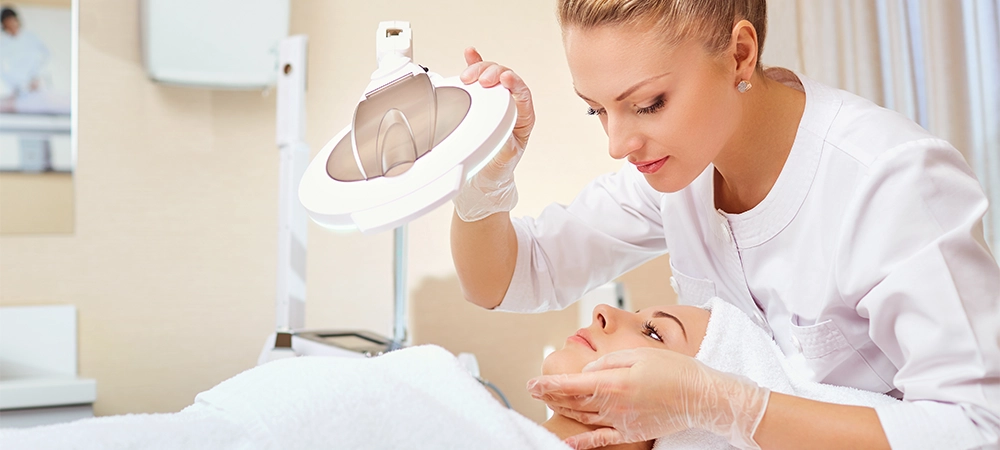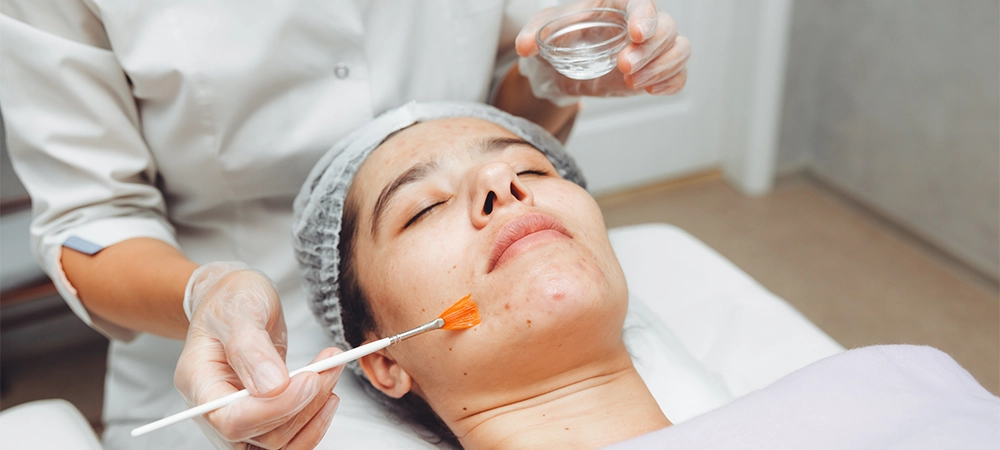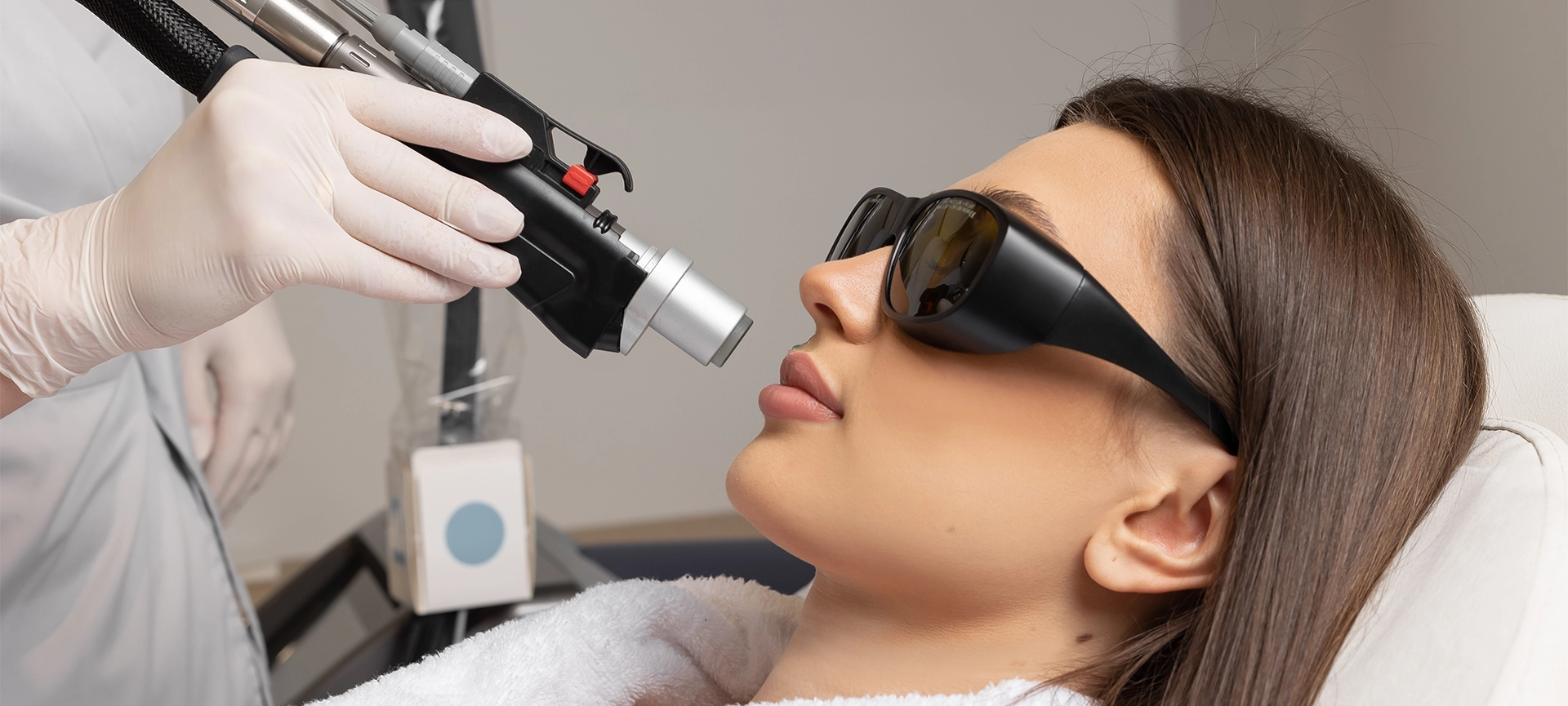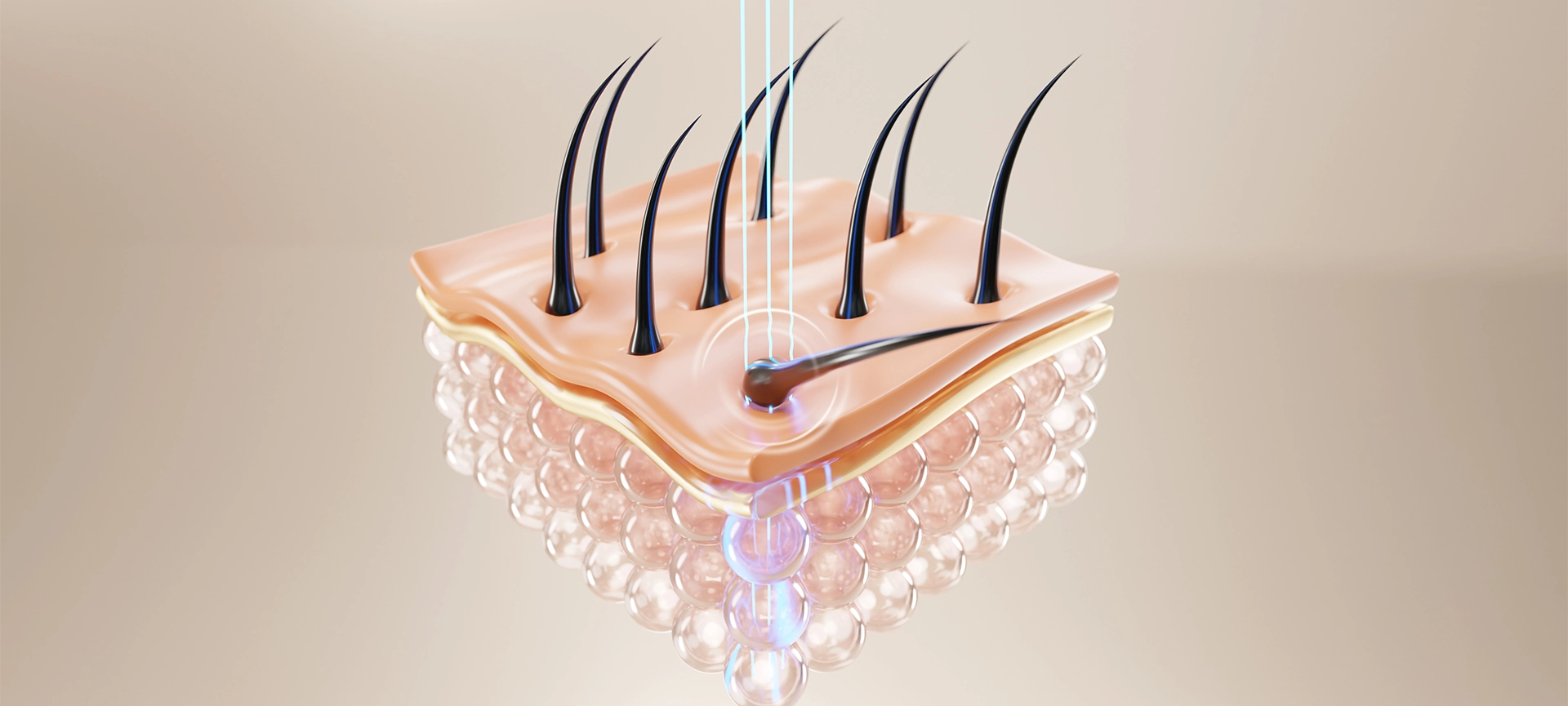
Chemical Peel Process Day by Day: What Does a Chemical Peel Do?
Have you ever stared longingly in the mirror, wishing for a smoother, more radiant complexion? – Read more to find out about the chemical peel process day by day.
As we age, it’s natural for our skin to lose some of its youthful glow. Sun damage, environmental factors, and genetics can contribute to fine lines, wrinkles, and uneven skin tone. But what if there was a way to rewind the clock and reveal a fresher, younger-looking you?
Let’s see what chemical peels can do for you.
Chemical Peels and What They Do
A Chemical peel offers a compelling solution for achieving a more youthful appearance. These non-surgical treatments harness the power of carefully selected acids to remove the outer layers of damaged skin, stimulating the production of new collagen and revealing a smoother, more even complexion.
Chemical peels come in a variety of depths, each targeting specific concerns. Lighter peels can address sun damage and superficial signs of aging, while deeper peels can tackle wrinkles and acne scars.
As your desire for a more youthful appearance grows, we provide a breakdown of the chemical peel process and what you can expect.
The Chemical Peel Process: A Day-by-Day Breakdown
Optimizing your chemical peel experience begins with a personalized pre-treatment plan.
Pre-Peel Prep (1-2 weeks before)
- Consultation: Your journey begins with a personalized consultation with one of our experienced medical professionals. We’ll talk about your skin concerns, desired results, and medical history. Included is the skin analysis to determine the perfect peel for you.
- Skin Prep Powerhouse: Some pre-peel preparation is crucial to ensure optimal results and minimize potential side effects. You will be provided with detailed instructions, but here are some key highlights:
- Sun’s Off-Limits: Say goodbye to harsh UV rays for at least one to two weeks before your peel. They can make your skin more sensitive and hinder healing. Stock up on wide-brimmed hats and SPF 50 sunscreen for unavoidable sun exposure.
- Medication Magic: Certain medications, particularly blood thinners and some acne treatments, can interact with the peel solution. Be transparent about your current medications during your consultation. You will be advised on adjustments to ensure a safe and practical experience.
- Exfoliation on Hold: Put away your exfoliating scrubs and harsh cleansers for a week or two before your peel. These products can irritate your skin and make it more susceptible to sensitivity during the treatment.
These simple yet crucial pre-peel steps will prepare your skin for a successful and transformative chemical peel experience.

The Chemical Peel Procedure (Day 1)
Here’s what you can expect during your in-clinic chemical peel procedure:
- Clean Canvas: The process begins with thoroughly cleansing your face to remove any makeup, oil, or impurities. This ensures the peel solution interacts optimally with your skin.
- Chemical Transformation: The chosen chemical solution will be carefully applied to your skin. The application method and the specific solution used will vary depending on the depth of the peel and your desired outcome.
- Finding Your Comfort Zone: Depending on the peel depth, you might experience a slight tingling or burning sensation during the application. Your comfort level will be closely monitored throughout the process, and adjustments will be made if needed. Lighter peels typically cause minimal discomfort, while deeper peels might require a cooling sensation to minimize burning.
- Neutralizing the Power: Once the solution has achieved its desired effect on your skin, a neutralizing solution will be applied to stop the chemical reaction. This ensures the peel doesn’t penetrate deeper than intended.
The entire procedure typically takes 30-45 minutes, depending on the peel depth and the size of the treated area.
Post-Peel Recovery (Days 2-7)
After your peel procedure, your skin will embark on a remarkable journey of renewal. Here’s a day-by-day breakdown of what you can expect:
Days 2-3:
- Feeling the Change: You might experience tightness, redness, and mild swelling in the treated area. This is a typical sign that the peel is working. Think of it as your skin kicking off its transformation process.
Days 3-5:
- The Great Reveal (Sort Of): This is when the visible peeling and flaking typically begins. This is your outer layer of skin gently shedding to reveal the fresher, smoother skin beneath.
Days 5-7:
- Soothing the Journey: The irritation and peeling should gradually subside as you near the end of the first week. Your skin will start to feel calmer and more comfortable.
Gentle Care is Key
During this recovery phase, gentle skincare is essential. Here are some key practices to follow:
- Skip the Scrub: Resist the urge to pick or scrub at your peeling skin. Let it shed naturally to avoid irritation and potential scarring.
- Hydration: Keep your skin well-hydrated with a gentle, fragrance-free moisturizer. This will help soothe any discomfort and promote healing.
- Sun Protection: Sun exposure is your skin’s enemy during recovery. Apply a broad-spectrum SPF 50 sunscreen religiously, even on cloudy days. A wide-brimmed hat can offer additional protection.
These simple aftercare tips will help you on your way to enjoying the radiant results of your chemical peel.
Beyond Recovery (Day 7 onwards)
The peeling and flaking should be a distant memory by day seven and beyond. A smoother, more radiant complexion will greet you.
The texture of your skin will feel noticeably improved, and any uneven tone will be diminished. Fine lines and wrinkles may appear softened, and sun damage will be visibly reduced, depending on the depth of the peel.
The results of a chemical peel are not permanent, but they can be long-lasting. Depending on the peel depth and your skin, you can expect to enjoy your improved complexion for several months to a year.
Maintenance peels might be recommended to maintain these results and continue addressing ongoing skin concerns. During your consultation, a personalized treatment plan can be discussed with your dermatologist to ensure you get the most out of your chemical peel journey.

Insider Tips for Optimal Results
Discovering the full potential of your chemical peel requires a two-way street: our expertise and your commitment to aftercare.
Here are some insider tips from our team to ensure a smooth and successful journey:
Finding Your Peel Perfect Match
Your unique skin type, concerns, and desired outcome will be carefully analyzed during your consultation. This helps recommend the perfect peel depth and solution to your specific needs.
Whether you’re looking to address sun damage, fine lines, or uneven skin tone, there’s a perfect peel.
- Post-peel TLC: The recovery breakdown demonstrates the importance of adhering to a strict post-peel care routine. This routine has three crucial pillars: gentle cleansing, consistent moisturizing, and sun protection. By diligently following these practices, you can minimize discomfort, promote optimal healing, and achieve the best possible results from your chemical peel.
- Setting realistic expectations: Chemical peels are effective for skin rejuvenation, but it’s essential to have realistic expectations. While some peels offer dramatic results, others provide a more subtle improvement. Remember, even lighter peels can lead to a noticeable difference in your skin’s overall texture and tone.
Following these insider tips and partnering with us, you can achieve the radiant, rejuvenated skin you’ve always dreamt of.
Are Chemicals Right for You?
Chemical peels can sound intimidating, and you might have some lingering questions. Here, we’ll address some common concerns and discuss the different types of peels available.
Pain Management
Discomfort levels vary depending on the peel depth. Lighter peels typically cause minimal tingling or burning, while deeper peels might require a cooling sensation. We prioritize your comfort throughout the procedure and will discuss pain management options during your consultation.
Scarring Risk
Scarring is a rare complication, but certain factors can increase the risk. Consulting with an experienced professional and following a strict post-peel care routine minimizes this risk.
Types of Chemical Peels
Chemical peels offer a variety of options to target specific concerns. Here’s a quick breakdown of some common types:
- Alpha Hydroxy Acids (AHAs): These gentle peels, like glycolic acid, address sun damage and improve skin texture.
- Beta Hydroxy Acids (BHAs): Salicylic acid, a common BHA, is ideal for tackling acne and oily skin.
- Trichloroacetic Acid (TCA): A stronger peel, TCA targets deeper wrinkles and sun damage.
Remember, this is just a brief overview. During your consultation, we can discuss the different types of peels in more detail and recommend the best option for your unique skin.
Unveiling the Science Behind Smoother Skin
Chemical peels offer a compelling solution for those seeking a more youthful and radiant appearance. By harnessing the power of carefully selected acids, these treatments can address a variety of concerns, including:
- Fine lines and wrinkles
- Uneven skin tone and sun damage
- Acne scarring
- Rough skin texture
Chemical peels provide a non-surgical approach to achieving smoother, brighter skin. However, remember that every individual’s skin is unique. Consulting with a board-certified skincare specialist with extensive experience in chemical peels is crucial to determining the best course of action for your specific needs and goals.
At Rejuvenation Medical Clinic Toronto, our skin specialists are dedicated to helping you achieve your desired aesthetic outcome. We offer various facial treatment options and will work closely with you to create a personalized treatment plan.

Ready to embark on your journey to smoother, more radiant skin?
Contact Rejuvenation Med Clinic Toronto today to schedule a consultation and determine what treatment is right for you.
Remember, informed decisions lead to optimal results. Take control of your skin health and unveil your most beautiful you!







